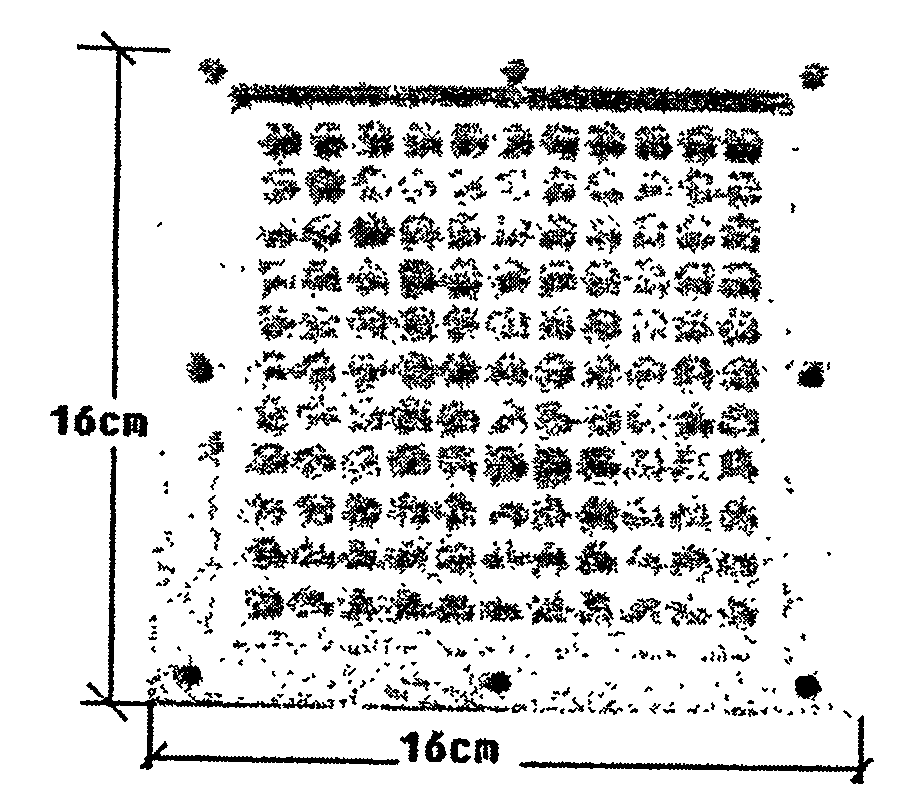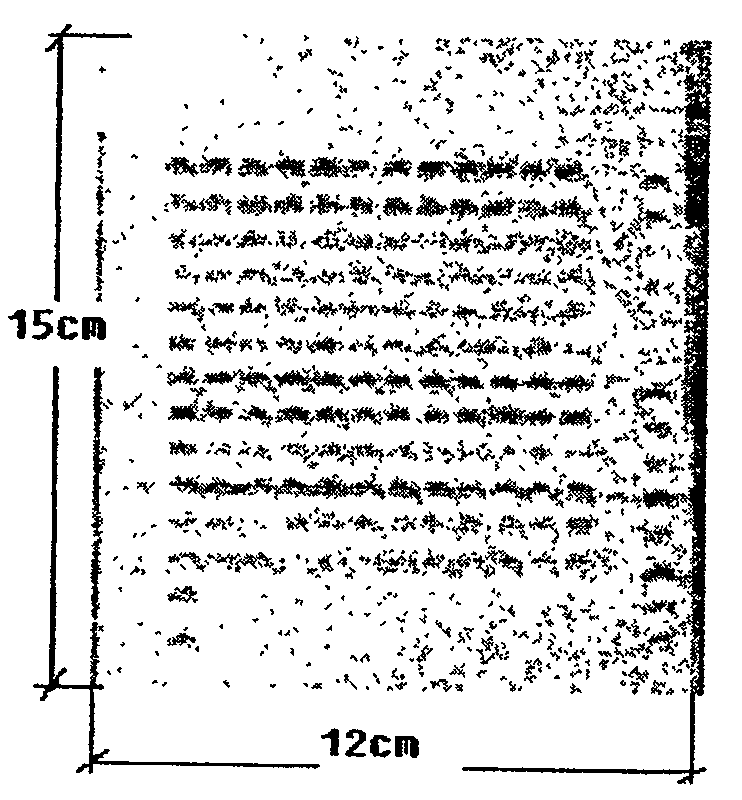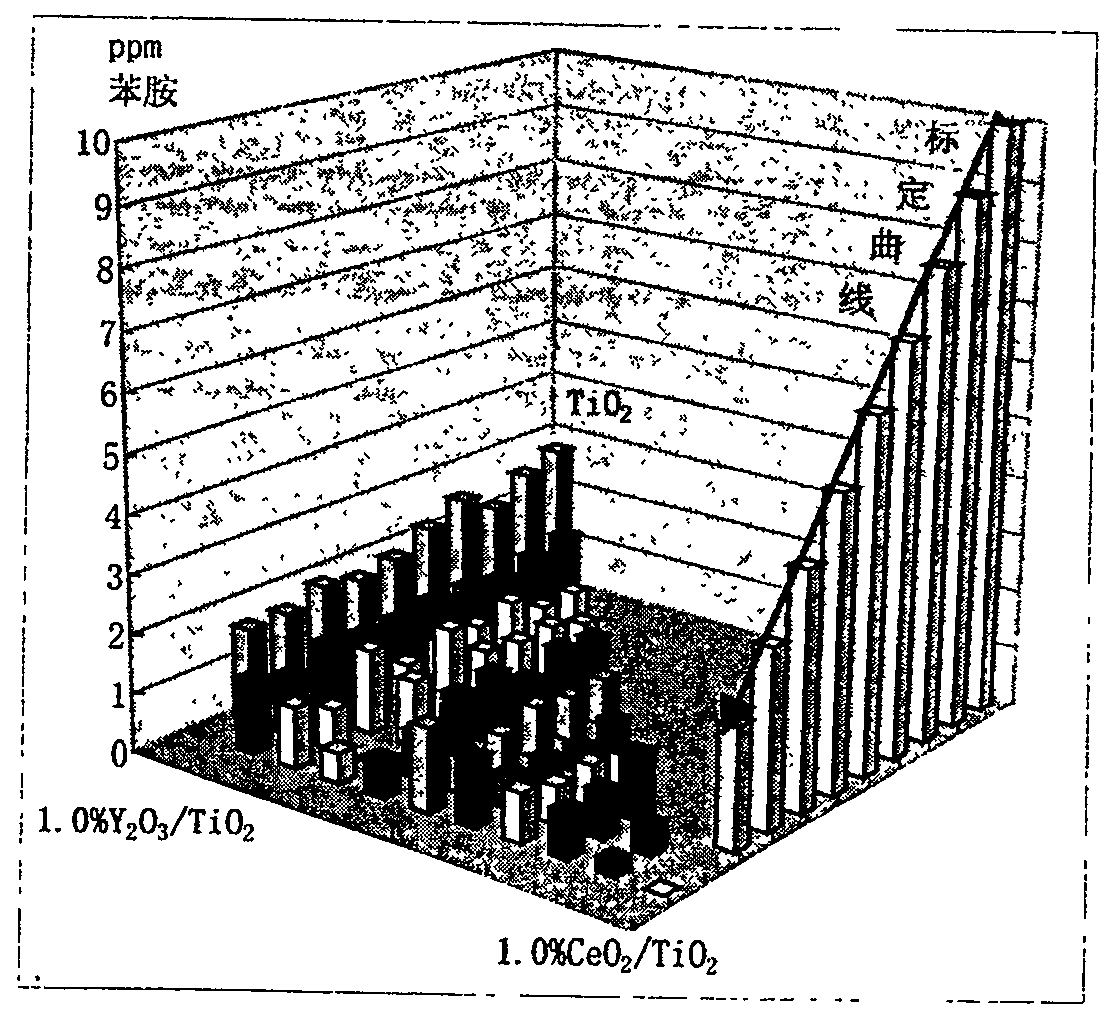Light-catalyst high flux research
A photocatalyst and catalyst technology, applied in the high-throughput research field of photocatalysts, can solve the problems of long time, speed that cannot meet high-throughput, and low efficiency.
- Summary
- Abstract
- Description
- Claims
- Application Information
AI Technical Summary
Problems solved by technology
Method used
Image
Examples
Embodiment Construction
[0008] On a 11x11 array reaction plate (such as figure 1 As shown in 1, a Teflon plate with a 11x11 hole array with a volume of 1 ml) is placed in 66 Y 2 o 3 -CeO 2 -TiO 2 catalyzer, then add 0.4 milliliters of 5% dextrose aqueous solution and 0.4 milliliters of 200ppm nitrobenzene aqueous solution on each catalyzer, and the reaction plate is placed in the ultraviolet light box (energy density is 320 μ W / cm 2 ) to react for 4 hours, then pipette 60 μL of solution from each catalyst on the array detection plate (such as figure 2 Shown, 11x11 Teflon plate) in the corresponding wells, drop 1-10ppm serial standard samples in the rightmost column, add 60μL of N,N-dimethylformamide solution containing 100ppm fluorescent agent to all samples After 10 minutes, they were analyzed simultaneously on the CCD high-throughput combined detection system, and the fluorescence response value data of aniline generated on the catalyst in Table 1 were obtained. When there is no sample, the b...
PUM
 Login to View More
Login to View More Abstract
Description
Claims
Application Information
 Login to View More
Login to View More - R&D
- Intellectual Property
- Life Sciences
- Materials
- Tech Scout
- Unparalleled Data Quality
- Higher Quality Content
- 60% Fewer Hallucinations
Browse by: Latest US Patents, China's latest patents, Technical Efficacy Thesaurus, Application Domain, Technology Topic, Popular Technical Reports.
© 2025 PatSnap. All rights reserved.Legal|Privacy policy|Modern Slavery Act Transparency Statement|Sitemap|About US| Contact US: help@patsnap.com



